Casio Exilim EX-Z1050 Review
Casio Exilim EX-Z1050
Casio's new ultra-compact has been at the pies.
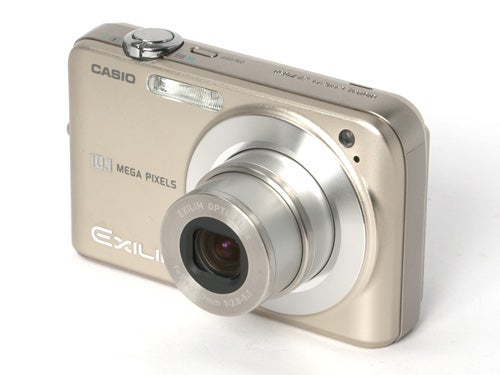
Verdict
Key Specifications
- Review Price: £177.98
It’s been a while since I’ve seen a Casio camera. The last one I reviewed was the excellent ultra-slim EX-S770 back in January, so when I opened the box of the EX-Z1050 there was a moment of embarrassed silence. You know that feeling when you run into someone you haven’t seen for several years, and you’re rather surprised to discover that they’ve put on about ten stone in weight? I experienced exactly that feeling. I was expecting another ultra-slim fashion camera, along the lines of the EX-S770 or Z75, so by comparison the Z1050 seems, well, kind of ”fat”.

That’s a bit unfair really, because in fact the Z1050 measures just 91.1 x 57.2 x 24.2mm and only weighs 125g, so by comparison to anything but another Casio it’s actually a very compact and lightweight camera. It’s only a couple of millimetres larger than the tiny Canon IXUS 70 that I reviewed last week, and is exactly the same weight. I’ve always been impressed by the style and elegance of Casio’s Exilim cameras, and the Z1050 has lots of both. The camera body is strong but lightweight aluminium, and is available in black, blue, pink or silver. I assume that the test sample I have here is supposed to be the silver one, but to be honest I’d have described it as more of a bronze colour.
Casio has been making digital cameras longer than almost anyone else in the industry, and its Exilim range of compact cameras are highly competitive, going head-to-head with Canon’s market-leading Digital IXUS range. The Z1050 costs around £175, which compares well with other 10MP models, such as the Canon IXUS 900 Ti (£269), Pentax Optio A20 (£198), the Samsung NV11 (£269) or even other ultra-compacts such as the 7MP Panasonic Lumix DMC-FX30 (£234).
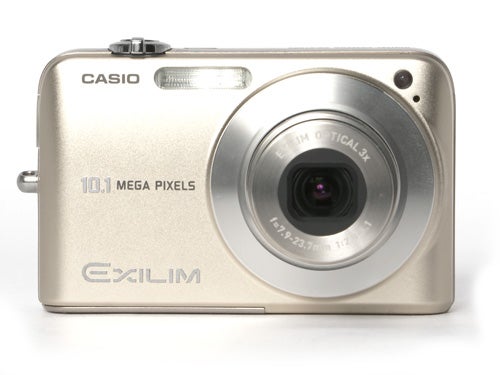
The Z1050 is a fairly straightforward snapshot camera, so the control layout is very simple and uncluttered. The zoom control is a rotating bezel around the shutter button, leaving plenty of room on the back for a thumbgrip. The overall shape fits quite neatly into the hand, and although it would possibly benefit from some sort of grip on the front of the body it doesn’t make that much difference.
The most obvious feature on the back of the camera is the big 2.6-in widescreen-format LCD monitor, although with only 114,960 pixels it’s relatively low resolution. The Z1050 has the same sidebar menu system as the EX-S770, with a row of icons always visible down the right hand side of the screen. I really like this control interface, because it makes routine adjustments of common camera features extremely quick and easy, requiring only a touch of the D-pad to select any of the options. Included on the menu are picture size and quality, flash mode, AF mode, self timer, Anti-shake DSP mode, ISO setting, white balance and exposure compensation.
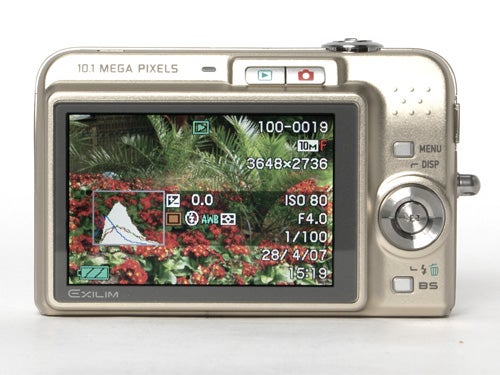
As well as this the camera also has Casio’s Best Shot mode, common to all of the company’s cameras. If you’re not familiar with it, it’s basically a scene mode system with 38 pre-set options, including some new ones I’ve not seen before. I particularly like the Auto-framing mode, which as far as I know is unique to this camera. It’s a difficult thing to describe, but basically it puts a frame on the screen which you position around your subject. You then half-press the shutter button and the camera will keep the frame centred on your subject even if you move the camera a bit, or your subject moves within the frame. When you fully press the shutter button, the picture that is recorded is automatically cropped to the size of the frame. It’s an odd feature, but I can see that it could have its uses for photographing quick-moving subjects such as children or animals.
The Z1050’s general performance is quite impressive. It starts up very quickly in just over one second, and in high speed continuous shooting mode it can rattle off an impressively fast six frames a second, although this is restricted to 2MP (1600 x 1200). In normal speed mode it can shoot at about one frame a second at full resolution. It also has a three-shot burst mode using the flash on every shot, and a unique “zoom continuous” mode which takes a shot, but also saves a second version of it with 4x digital zoom applied. I guess it must have seemed like a good idea to someone…
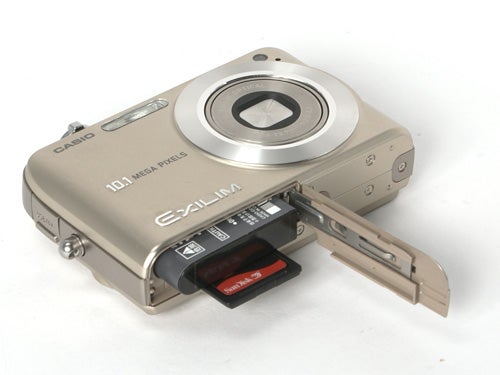
Battery life also appears to be very good, not surprising considering the large 1300mAh Li-ion rechargeable that powers the camera. Casio makes no particular claims, but I took over 200 shots while testing the camera and the battery indicator was still reading full.
One feature that I’m not too impressed by is the “Anti-shake DSP” mode, which combines a CCD-shift image stabilisation system with an increase in ISO setting to produce a faster shutter speed. While this does indeed reduce the chance of camera shake or movement blur, it also increases image noise, reducing overall image quality. As anti-shake systems go it doesn’t seem to be terribly effective, and I found I was still getting movement blur on medium-zoom shots at around 1/30th of a second. Most other moving-sensor stabilisation systems would be able to cope with that.
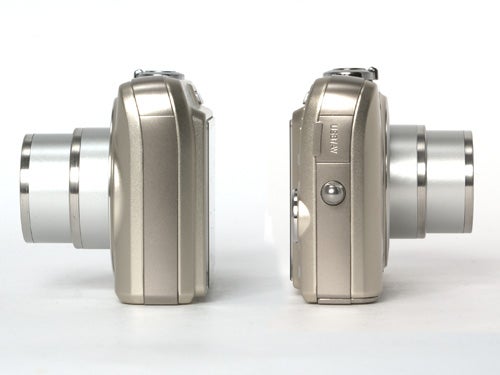
Other technical features of the Z1050 are impressive however. Casio was the first company to introduce a 10-megapixel compact camera, and the Z1000 was the immediate predecessor of this model. One of the objections to such powerful compacts is that cramming so many photocells onto such a small sensor actually reduces overall image quality and increases image noise and purple fringing. For the Z1050 Casio has gone some way towards addressing this issue by giving it a physically larger sensor. Most compacts use a 1/2.5-in type sensor, while some higher-spec models (including the Z1000) use a larger 1/1.8-in type. The Z1050 uses a 1/1.75-type, which is larger still. In theory the lower photocell density should improve image quality and reduce image noise.
This is one theory which definitely works in practice. I found the overall picture quality to be outstanding. The EX-Z1050 uses very low file compression, so it can take full advantage of the extra resolution generated by that big sensor. File sizes average around 5MB, but go as high as 7.5MB for some more detailed subjects. While the gain in fine detail over a seven or eight megapixel camera isn’t hugely significant, it is there if you look. The 3x zoom f/2.8 – f/5.1 lens produces good edge-to-edge sharpness with relatively little wide-angle distortion, while colour reproduction and exposure are excellent. A 1GB card holds approximately 154 shots at maximum resolution.
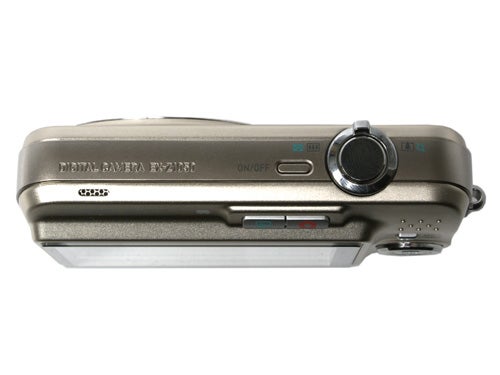
As I mentioned, image noise and purple fringing have previously been major issues for compacts with 10MP sensors, but Casio seems to have successfully solved these problems. Image noise levels were no higher than I would expect to see from a good 7MP camera, with very low levels up to 200 ISO, some noise at 400 and significant noise at 800. Those annoying purple fringes on high-contrast edges seems to have been all but eliminated, which gives the EX-Z1050 a huge advantage over most other 10MP compacts.
”’Verdict”’
The Casio Exilim EX-Z1050 demonstrates that it is possible to make a good 10MP compact camera without suffering problems with excessive image noise or fringing. As well as that it is a well-made camera offering good handling, brisk performance, some unique and useful features and excellent image quality, and at a sensible price point too.
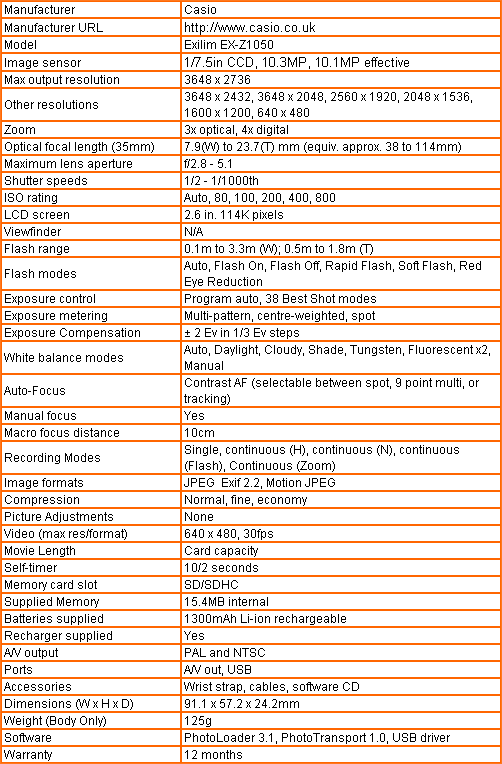
”A range of test shots are shown over the next few pages. Here, the full size image at the minimum ISO setting has been reduced for bandwidth purposes to let you see the full image, and a series of crops taken from original full resolution images at a range of ISO settings have been placed below it in order for you to gain an appreciation of the overall quality.”
—-

—-

Nice and noise-free at the minimum 80 ISO.
—-
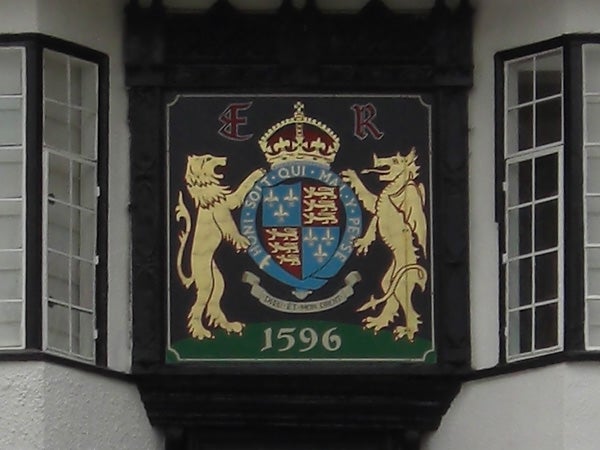
Also no noise at 100 ISO, as one would expect.
—-
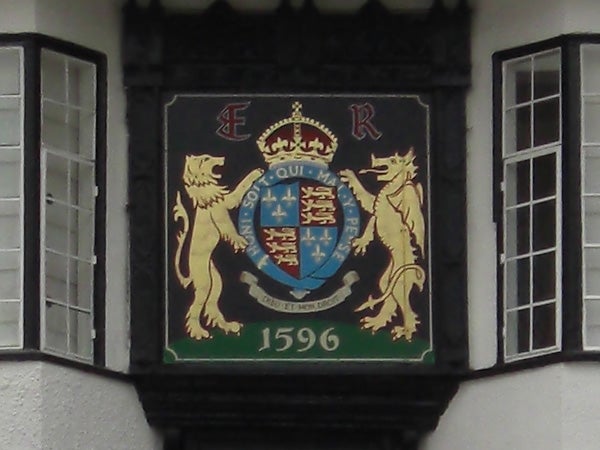
Image quality is still good at 200 ISO.
—-
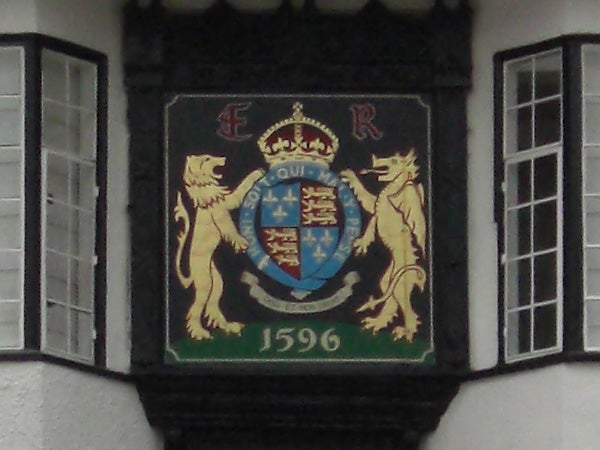
At 400 ISO the noise reduction system has really kicked it, reducing some fine detail, but overall quality is still acceptable.
—-
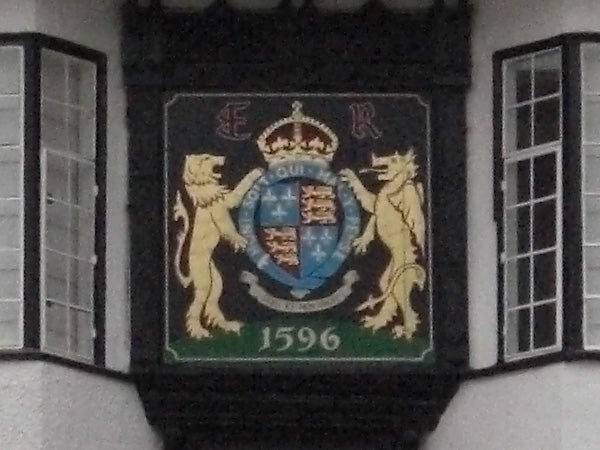
At the maximum of 800 ISO there is a fair bit of image noise visible, but colour distortion is at least kept to a minimum.
—-
”A range of test shots are shown over the next two pages. Here, the full size image has been reduced for bandwidth purposes, and in some case a crop taken from the original full resolution image has been placed below it in order for you to gain an appreciation of the overall quality.”
—-
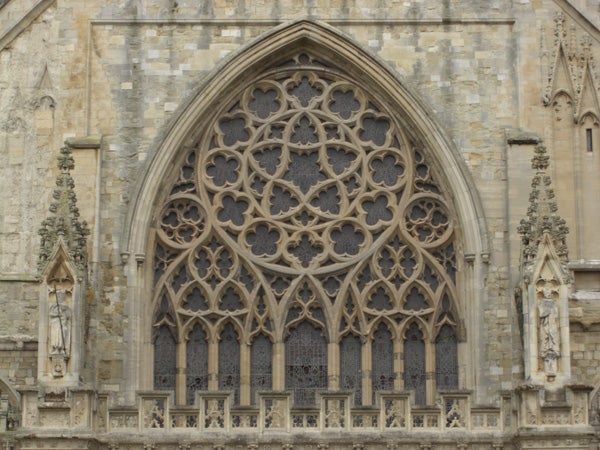
Here’s the usual comparison shot for overall detail. Either click to see the full-size image or see the crop below.
—-
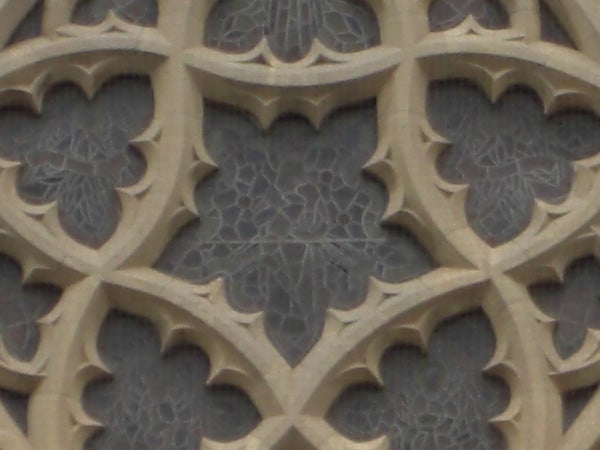
The image is a little bit soft, but the overall level of detail is very high, with almost no compression artefacts.
—-

This was taken using the wide end of the zoom range, equivalent to 38mm. Unfortunately the full-size version of this was too big to be uploaded, at an impressive 5.7MB.
—-

This was taken from the same position using the telephoto end of the zoom, equivalent to 114mm.
—-
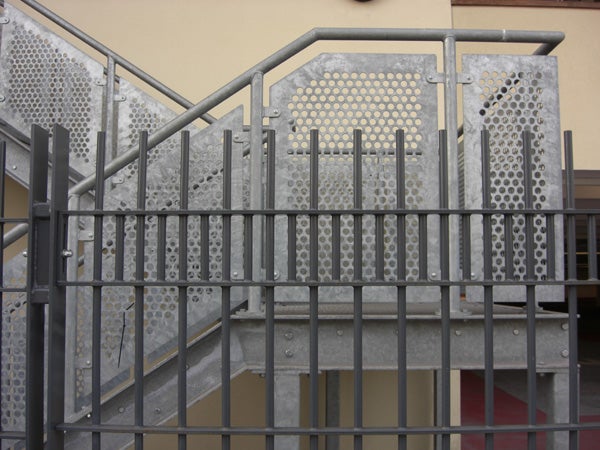
The lens is very good, producing only a little distortion at wide angle.
—-
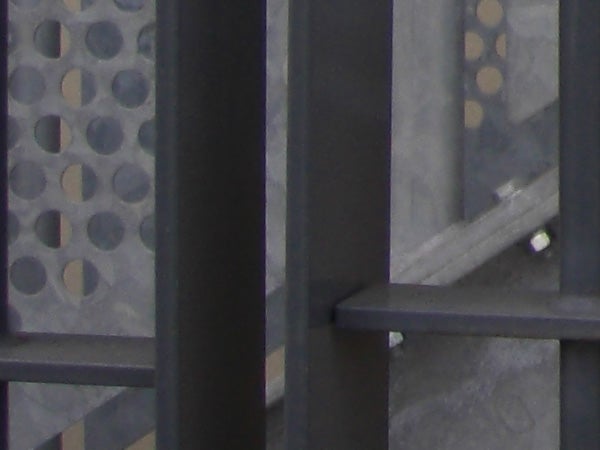
This is a crop from the corner of the above image, showing the excellent level of edge sharpness.
—-
”A range of test shots are shown over the next two pages. Here, the full size image has been reduced for bandwidth purposes, and in some case a crop taken from the original full resolution image has been placed below it in order for you to gain an appreciation of the overall quality.”
—-

Unlike some 10MP compacts, the Z1050 has no problem with purple fringing.
—-
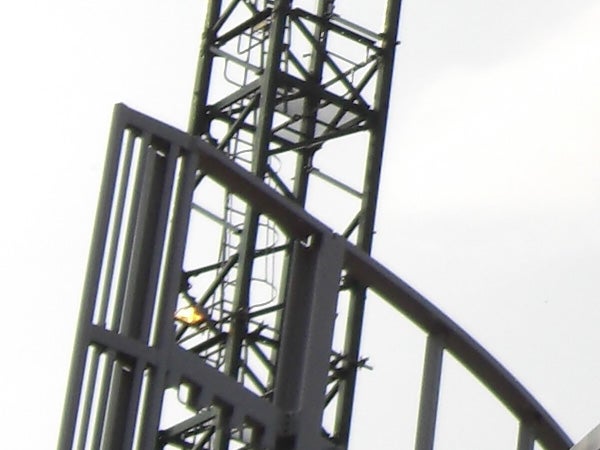
In this crop from the above image, there is almost no fringing visible despite the very high contrast.
—-

Colour rendition is excellent, although the limited dynamic range means the sky has been burned out.
—-

A 10cm macro range is nothing special, but focusing is quick and accurate.
—-
Trusted Score
Score in detail
-
Value 9
-
Image Quality 8
Features
| Camera type | Ultra Compact |
| Megapixels (Megapixel) | 10.1 Megapixel |
| Optical Zoom (Times) | 3x |

